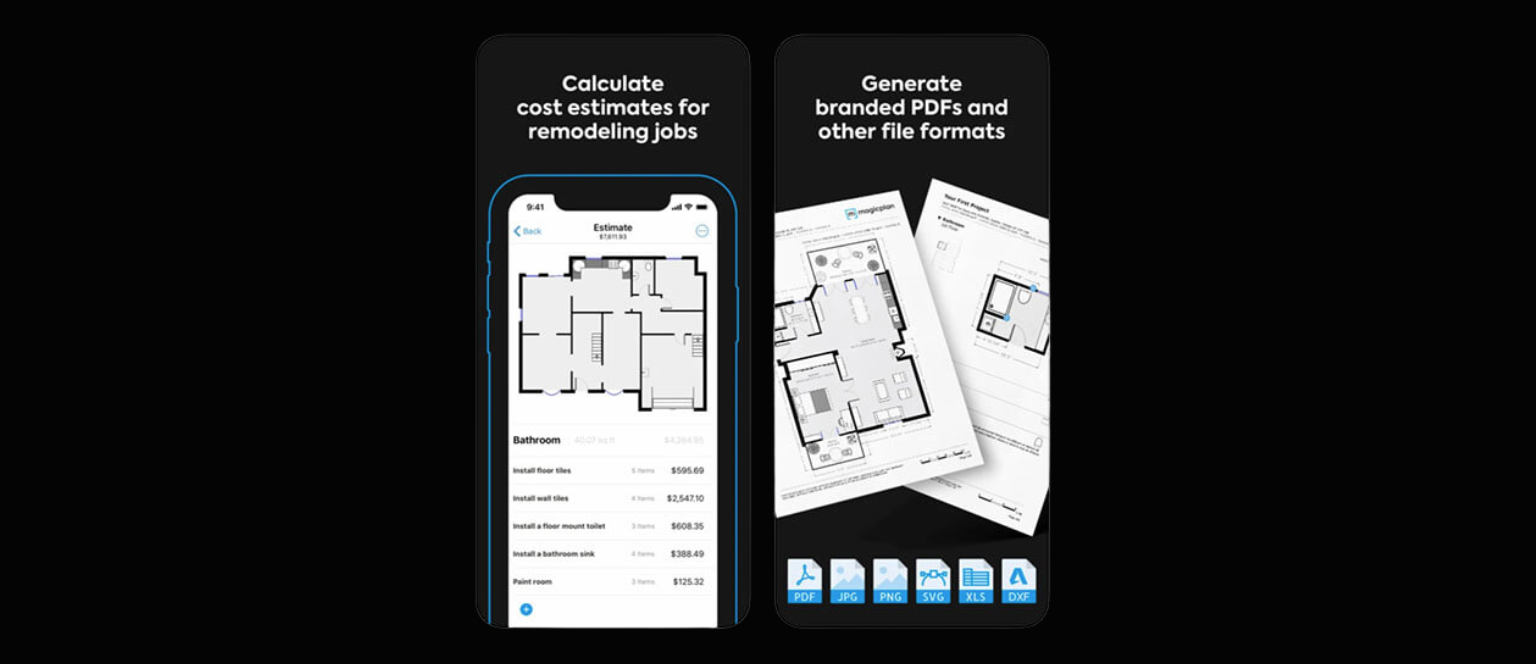Unit testing verifies the functionality of individual software components in isolation. It is an essential practice for developing robust, scalable applications efficiently and cost-effectively. By validating units independently, unit testing enables simple, focused design, early defect detection, adaptability to change, and building confidence through repeated verification.
Unit testing gains the power to optimize software quality by revealing hidden issues early through isolation, controlling variables precisely through test doubles, and providing objective data to shape decisions rather than opinions alone. It enables high-volume, incremental release cycles with minimal risk of catastrophic failure. Teams can deliver value to users rapidly while still honoring high quality, security, performance, and reliability standards. This blog will be focused on identifying the concept of unit testing and its importance in custom enterprise software development.
Table of Contents
What is Unit Testing?
Unit testing verifies individual units or components of a software program independently. It ensures each unit works as intended in isolation before integration into a more extensive system. Unit tests validate unit output matches expected results based on defined specifications and requirements.
Unit testing by a custom software development company USA aims to identify software defects early, reduce risk and facilitate continuous integration/delivery of high-quality code. When done correctly, unit testing gives teams confidence in the functionality, reliability, and stability of the code they release.
Unit tests consist of test cases written and executed by developers. Each test case verifies a specific aspect of a unit’s functionality under various conditions. Test cases should exercise all paths through a unit, including edge cases, invalid inputs, regular operations, and expected errors.
Well-written unit tests follow principles like isolating units from dependencies, testing one assertion per test, giving tests descriptive names, and writing tests before coding units. It ensures tests properly validate units and catch issues earlier when they are less expensive.
Unit testing by a custom software development company USA verifies each component of an application works. It builds quality and confidence in code by finding and fixing issues early, reducing risks, facilitating integration, and delivering high-quality, minimally defective software to users.
Unit testing should follow isolation, objectivity, correctness, comprehensiveness, and reusability principles. When done consistently throughout development, unit testing leads to robust systems, stable releases, satisfied users, and continued business success. Unit testing puts quality first, enabling frictionless progress and securing future prosperity.
Importance of unit testing in software development
Unit testing is critical for delivering high-quality software. It verifies individual components work as intended in isolation before integration into a more extensive system. Unit testing finds defects early and reduces risks, enabling continuous development and minimal disruption.
Unit testing gives developers confidence in the code they release. It ensures each unit satisfies defined requirements and specifications, appropriately handles expected inputs and edge cases, and does not introduce unintended side effects or regressions. Well-written unit tests act as objective documentation for how software should function.
Some key benefits of unit testing in enterprise custom software development include increased quality, reduced risks, lower costs, continuous integration, and prevention of regressions. Unit testing results in software that meets user needs, minimizes defects and hassle, and continues operating as intended, even as underlying code changes over time.
High quality is the primary benefit of unit testing. It leads to minimal bugs, stable software, positive user experiences, and business success. Unit testing identifies issues early when they are inexpensive to fix rather than after integration or release. It helps teams avoid costly remediation, support issues, negative feedback, churn, and harm to brand reputation.
Continuous integration and delivery by a custom software development company in the USA are enabled by frequent unit testing. Code can release rapidly and incrementally instead of large, infrequent batches. Releases have a lower chance of defects or undue disruption when deployed through this agile, iterative approach. Unit testing facilitates experimentation and data-driven development by enabling A/B testing and quickly determining what works.
Benefits of Unit Testing
Early defect detection
Unit tests find problems with components in isolation, not after integration. Issues are easier and cheaper to fix at this stage than later in development or after release. Early detection prevents Defects from compounding and disrupting progress.
Continuous integration
Frequent unit testing facilitates continuous integration and delivery of code. Updates can release rapidly and incrementally instead of large, infrequent batches. This agile approach better adapts to changing needs and enables quick iterations based on new information. Low-risk continuous integration also improves productivity, time-to-market, and user experience.
Regression prevention
Unit tests by the best custom software development company documents how components should function and continue operating over time. They detect when new code changes unexpectedly break previous functionality. A regression could easily undermine software quality, stability, and critical features without unit tests. Unit testing provides an adequate safeguard against regression.
Objectivity
Well-written unit tests in custom software development solutions are objective representations of requirements and specifications. They determine whether units function as intended based on facts, not subjective opinions. Unit testing provides concrete validation that code meets defined needs and standards. It also facilitates data-driven development by enabling quick iteration based on results.
Isolability
Unit testing isolates components from dependencies and side effects. The functionality of each unit can be assessed independently. It allows for pinpointing issues and ensuring changes to one unit do not unexpectedly impact others. Isolability simplifies troubleshooting, experimentation, and maintaining minimally coupled and maximally cohesive code.
Unit testing delivers comprehensive benefits and enables high-quality, low-risk custom enterprise software development. Integrating into workflows leads to minimally defective code, continuous integration, prevention of regressions, cost efficiency, increased quality, objective validation, simplified troubleshooting, and innovation optimized through data. Overall, unit testing builds confidence in progress and prosperity.
Unit Testing Frameworks
Unit testing frameworks provide tools and structures to help developers write and execute automated unit tests. They handle repetitive tasks like test setup, assertion checking, result reporting, and cleanup. Popular unit testing frameworks include JUnit, TestNG, Karma, and Mocha.
Frameworks have benefits over manual testing in enterprise custom software development, including efficiency, consistent approach, skipped grief, documented tests, and tight integration into the development workflow. They facilitate rapid, quality-focused development through simplification, repetition, reuse, and feedback. Frameworks also provide mechanisms for code coverage analysis, tagging tests, sorting and filtering results, running tests asynchronously, record-and-replay, and distributed testing environments.
A unit testing framework consists of infrastructure, environment creation/teardown, assertions for verifying results, and a test runner for executing cases. Infrastructure includes creating a testing environment, isolating units, and handling setup/teardown. The environment should have no dependencies, external state, or initial values impacting test outcomes. It aims for independently developed components that can release with high confidence.
The test runner executes test suites and individual test cases. It reports results, allowing for pass/fail determination at multiple levels. Runners can iterate over test cases repeatedly, randomly order them, group them into logical suites, and provide summaries of the overall status and particulars of failures.
Key benefits of unit testing frameworks include:
- Increased efficiency– Frameworks handle repetitive setup, testing, and cleanup tasks, freeing developers to focus on writing meaningful tests.
- Consistent approach– A single framework enforces structure and best practices across all testing codes.
- Reduced manual work- Frameworks minimize time spent on low-level, mundane processes.
- Documented tests– Test cases act as documentation, specifying how units should function. They provide objectivity and safety as software evolves.
- Tight integration– Unit testing seamlessly encompasses the development workflow. It proves valuable at every stage, from planning features to troubleshooting bugs.
- Code coverage analysis– Frameworks provide metrics and reports on how thoroughly test cases cover project code. Gaps can indicate areas needing additional tests.
- Tagging and filtering– Test cases by custom software development company in USA can group into logical sets using tags. Runners can then select only relevant test suites based on tags.
Writing Testable Code
To maximize the benefits of unit testing, code must be designed and developed with testing in mind. Testable software has characteristics enabling seamless integration of automated verification into agile workflows. By following fundamental principles, teams can craft software suited for robust, repeatable testing to gain confidence through each iterative release.
Characteristics of testable code:
- Isolated units– Components have no dependencies on external factors like shared state, global variables, implicit relationships, or hard-coded values. Units can run in isolation and be tested independently.
- Injection friendly– Code accepts dependencies and collaborators through constructors, interfaces, or setter methods instead of hardcoding them. It allows for injections of test doubles like mocks and stubs.
- Covered by tests– All functionality and code paths have corresponding test cases in custom software development solutions. No logic is untested, enabling confidence in system stability under various conditions.
- Explicit interfaces– Abstractions like interfaces clarify the responsibilities of units and the dependencies between them. It simplifies testing by enabling easy replacement of actual implementations with stubs or mocks.
- Logged/traceable– Important runtime information is logged, captured, or traced. It aids in debugging issues that emerge during testing and ensuring enough detail exists to diagnose problems correctly.
- Predictable output– Units have deterministic responses to given inputs. They do not contain random or unpredictable elements that complicate writing test cases and verifying expected results.
Design Principles for Testability
The following tips will help in designing principles for testability-
- Loose coupling– Units have minimal dependencies on one another. They can vary independently without impacting other components. It enables isolation during testing and flexibility.
- High cohesion- A unit focuses on one purpose or objective. Its logic stays narrowly scoped rather than spreading across multiple loosely related tasks. Cohesive units are easier to understand, test and maintain over time.
- Keep it simple– Avoid over-engineering complex logic and abstractions before they are necessary. Simple, focused code is easier to understand, test, maintain, and optimize over the lifetime of a system.
- Testability- Consider how components will be tested by the best custom software development companies during design and development. Evaluate the testability of options and refactor as needed to ensure components will ultimately work together and stand on their own for testing in isolation.
- SOLID principles– Apply Single Responsibility, Open/Closed, Liskov Substitution, Interface Segregation, and Dependency Inversion principles. Principles developed by the best custom software development company lead to simple, flexible, maintainable, and testable code.
Anatomy of a Unit Test
Unit tests consist of test cases, or individual tests, that specify inputs, expected outputs, and assertions to determine whether a unit produces the correct results. The basic anatomy of a unit test includes:
- Test fixture – Establishes the testing environment and any needed resources/dependencies. It sets up the unit under test and ensures no external state impacts the results. The fixture isolates the unit by a custom software development company in USA, allowing it to run and be validated independently.
- Arrange – Initializes any variables, resources, or dependencies needed to execute the test. It sets the conditions and inputs required to invoke the unit’s functionality.
- Act – Calls the unit’s functionality being tested, passing in any required arguments or parameters. The unit’s code runs and produces some output or side effects.
- Assert – Makes one or more assertions comparing the actual output to the expected, correct result. Assertions determine whether the unit passed or failed the test. They validate important attributes like equality, matching values, presence/absence of elements, exception throwing, etc.
- Teardown – Cleans up any resources or variables initialized during the test to avoid impacts on subsequent tests. It ensures a clean slate, so each test runs in isolation.
- Test name – Clearly and descriptively name the test case. Good names help quickly understand a test’s purpose and expected outcome at a glance. They enable easy searching/filtering and following along with test execution.
- Tags (optional) – Used to logically group tests together. Tags aid in organizing test suites, running only relevant tests, and increasing scannability. They provide more metadata enabling flexible, targeted test execution.
Common Unit Testing Techniques
A variety of techniques facilitate robust, scalable unit testing practices. These include test-driven development, behavior-driven development, mocking dependencies, stubbing interfaces, and using test doubles. These techniques enable defect-free software delivery through continuous validation, adaptation, and optimized quality when integrated systematically. Details of these testing techniques are as follows-
Test-driven development (TDD)
Test-driven development (TDD) is an agile approach in which test cases are written before production code. Tests define requirements and drive design and development. New functionality is created and shaped by writing tests to satisfy them. TDD leads to simple, focused code well-suited for testing and change.
Some benefits of TDD include revealing design flaws early, minimizing defects and technical debt, having the flexibility to change, and creating testable software. Tests by the best custom software development companies that serve as comprehensive documentation. TDD practices include writing tests first, ensuring tests pass quickly, refactoring tests and code together, and treating the test suite as a first-class artifact.
Behavior-driven development (BDD)
Behavior-driven development (BDD) is a variant of TDD where tests are written in a ubiquitous language that is platform-agnostic and optimized for communication. Tests specify expected outcomes and valid states without concern for implementation details. BDD tools and languages capture requirements, design, development, and acceptance criteria.
Benefits of BDD include improved communication, shared understanding, flexible adaptation to change, comprehensive documentation, and alignment of technical and non-technical stakeholders. BDD practices feature hierarchical tests with titles acting as compound logic, standard syntax (Given, When, Then), and representation of tests in natural language.
Mocking and stubbing
Mocking and stubbing replace actual dependencies with to-be-defined objects to isolate units during testing. Custom software development services allow verification of unit functionality independent of external influences. Benefits include speed, control, flexibility, and simplified setup/teardown.
Mocks have expectations of interactions to verify, while stubs have simple implementations acting as placeholders. Mocking focuses on verifying behavior, stubbing on setting up plausible collaborators. Both techniques increase test coverage by enabling tests of unhappy paths, edge cases, and exceptional conditions that might be overlooked.
Test doubles (e.g., fakes, dummies)
Test doubles refer to any technique stubbing, mocking, faking, or dummying used to substitute actual dependencies with controlled test interactions. They provide virtual counterparts implementing just enough functionality to satisfy test scenarios. The benefits of test doubles include isolation, verification, simplified setup, fast iteration, and increased code coverage.
Standard unit testing techniques by custom software development consulting companies facilitate high-quality, scalable development through iterative validation, communication, flexibility, and minimization of defects. TDD and BDD drive design through tests, enabling simple code, focus, and comprehensive documentation. Mocking, stubbing, and test doubles gain control and speed by replacing actual complex dependencies with minimal virtual counterparts.
These techniques build confidence through repeatable requirements verification, prevent regressions, reveal flaws early, and result in robust systems adapted to change. They give teams the power to validate assumptions, prove concepts, and shape strategies empirically rather than anecdotally. Unit testing techniques lead to the software of the highest integrity, optimized value, and poised to sustain long-term success.
Handling Dependencies in Unit Tests
Unit testing isolates components to validate their functionality independent of external influences. However, real-world software contains custom software development services, and more than units utilize to accomplish their objectives. These dependencies cannot simply be ignored during testing and must be handled appropriately through mocking stubbing and test doubles.
Mocking creates fake implementations of dependencies to control their interactions and verify correct usage precisely. Mocks allow testing of edge cases, unhappy paths, and exceptions that might be impractical to test otherwise. They reveal incorrect assumptions and subtler defects that could lead to future issues if left unnoticed. Mocking provides speed and flexibility by avoiding complex setups required by actual dependencies.
Stubbing substitutes simple placeholders for complex dependencies during testing. Stubs implement just enough to satisfy test requirements and enable plug-and-play use of units under test. Like mocking, stubs increase speed, flexibility, and coverage by lowering the costs of interaction and setup. However, stubs provide less behavior verification, ensuring real collaboration is possible without unintended side effects. Together, mocking and stubbing gain isolation necessary for pure unit testing.
Looking for an experienced software development company?
Reach out to A3logics
Unit Testing in Agile and DevOps Environments
Agile and DevOps methodologies aim to deliver custom software development services frequently through iterative development, continuous integration, and automation. Unit testing plays an instrumental role in enabling these goals. It facilitates fast iterations by allowing quick validation of changes. Unit testing also catches issues early, reducing remediation costs and improving software quality with each release.
Unit testing by custom software development consulting experts treats the test suite as a first-class artifact of development. Tests are documented and managed with the same care as production code. They evolve to keep pace with features and maintain comprehensive validation coverage. This approach builds confidence in iterative delivery by providing stability before deployment.
Unit testing supports core principles in agile environments like simplicity, adaptability, immediate feedback, and valuing individuals and interactions over following plans. It enables simple designs, reveals flawed assumptions early, and proves concepts through empirical evidence to shape strategies. Unit testing also gives honest, actionable feedback for adapting to changes and optimizing quality.
Challenges and Pitfalls of Unit Testing
While unit testing provides significant benefits, it also introduces specific challenges and pitfalls if not appropriately addressed. Some potential issues with unit testing include:
- Isolation performed incorrectly– If units are not genuinely isolated and independent during testing, the benefits of custom software development services are not realized. External influences could impact test outcomes, obscuring the source of defects and complicating troubleshooting.
- False confidence from high test coverage– Merely achieving high test coverage does not necessarily mean high quality or robust code. Tests could be poorly designed, brittle, or over/under-specifying requirements. Test coverage alone proves limited value.
- Premature optimization of test suites-There is a temptation to optimize test suites for speed and maintainability before they are even written. It can lead to over-engineering, a distraction from actually writing tests, and dismissing potential benefits they could provide. Optimization comes after solid foundations are built.
- Lack of test doubles– If actual dependencies are used during testing in custom software development solutions, isolation cannot be achieved. Mocks, stubs, and fakes enable isolation and expand testability. Without them, specific units may be impossible to test adequately in isolation.
- Insufficient test types– Only unit or integration tests might be written, neglecting other vital types like acceptance, end-to-end, load, performance, etc. A balanced test strategy gains confidence, while an imbalanced one leaves specific important characteristics unvalidated.
Conclusion
Unit testing should not be an afterthought but should be integrated systematically into development workflows. When unit testing is performed diligently, it facilitates quality-focused, agile practices resulting in software optimized for stability, maintainability, value, and longevity. Teams can deliver features rapidly while still meeting high standards. Users gain functionality that works as intended without fail. And businesses prosper through innovation that keeps pace with technological advancements while managing risk. Unit testing transforms how software is built and sustains success across it all. Overall, there is no substitute for its demonstrated ability to maximize quality, control, and responsiveness at scale.
Frequently Asked Questions (FAQs)
What is the unit test in software development?
A unit test verifies the functionality of a single software component in isolation during the custom enterprise software development process. It ensures units operate as intended independently and interface with collaborators correctly.
Unit testing treats the codebase as a series of components working together. It reveals problems at a granular level, enabling precise diagnosis and targeted fixes. Unit tests also specify contracts and preconditions units must uphold, acting as documentation to aid understanding for new team members or evolving technologies.
Why is unit testing necessary?
Unit testing enables simple, focused design, early defect discovery, adaptability to change, and building confidence through repeated verification. It results in higher quality custom software development services delivered more rapidly and cost-effectively.
Unit testing helps develop discipline around quality by specifying objective criteria for correctness upfront and measuring against them continuously. It transforms mindsets from “testing after” to “testing first,” enabling iterative and incremental development workflows focused on building what provides value. Unit testing is also instrumental in advancing agile methodologies, DevOps practices, and continuous integration/delivery.
Who performs unit testing in a software organization?
Developers or engineers typically write and execute unit tests for the functionality they develop. Unit testing follows an individual, component-level scope. Developer-written unit tests offer a deep, nuanced perspective essential for comprehensive validation. They also build ownership and buy-in by giving developers a voice and responsibility for quality. Unit testing becomes second nature when integrated into practice from the start, with benefits realized across the entire codebase and development lifecycle.
What is the main benefit of unit testing?
The primary benefit of unit testing is isolating components to validate their correct, independent functioning. It enables early issue detection, minimal rework costs, and application stability, maintainability, scalability, and longevity.
Isolation during testing provides clean conceptual models of how units work, interact, and interface. It allows the flexibility to make changes without unintended side effects by clearly understanding dependencies and contracts between components. Unit testing also facilitates more modular, reusable code through a simplified understanding of any changes to a codebase. Overall, isolation built through unit tests leads to software optimized for evolution, cost-effectiveness, and quality.






